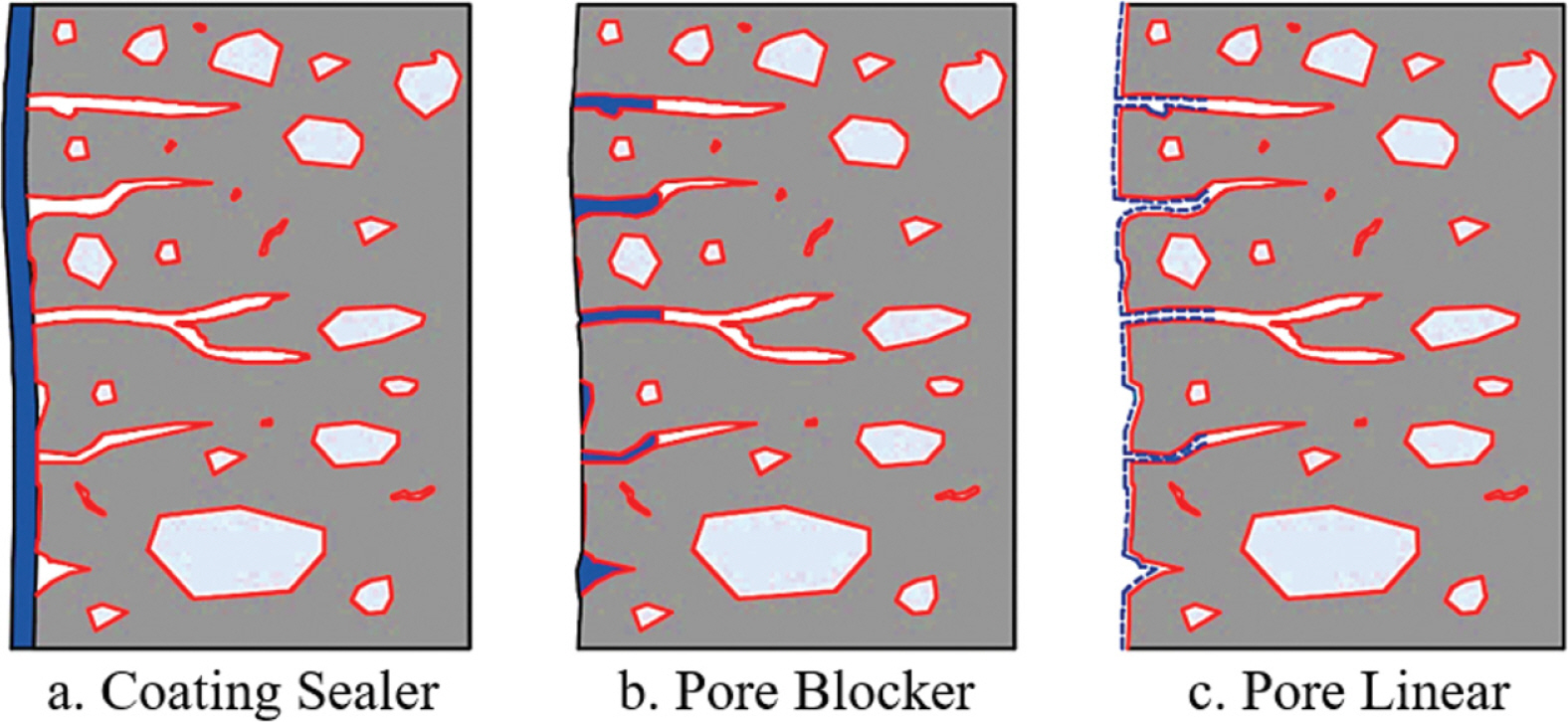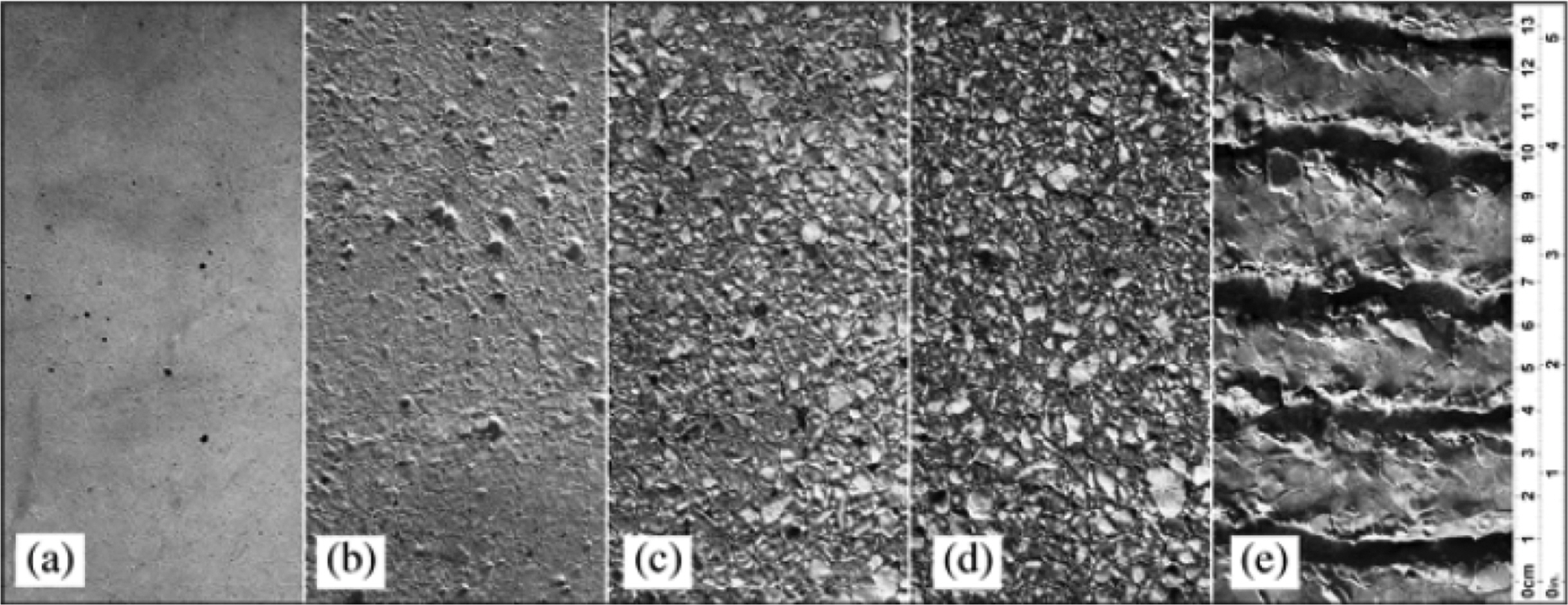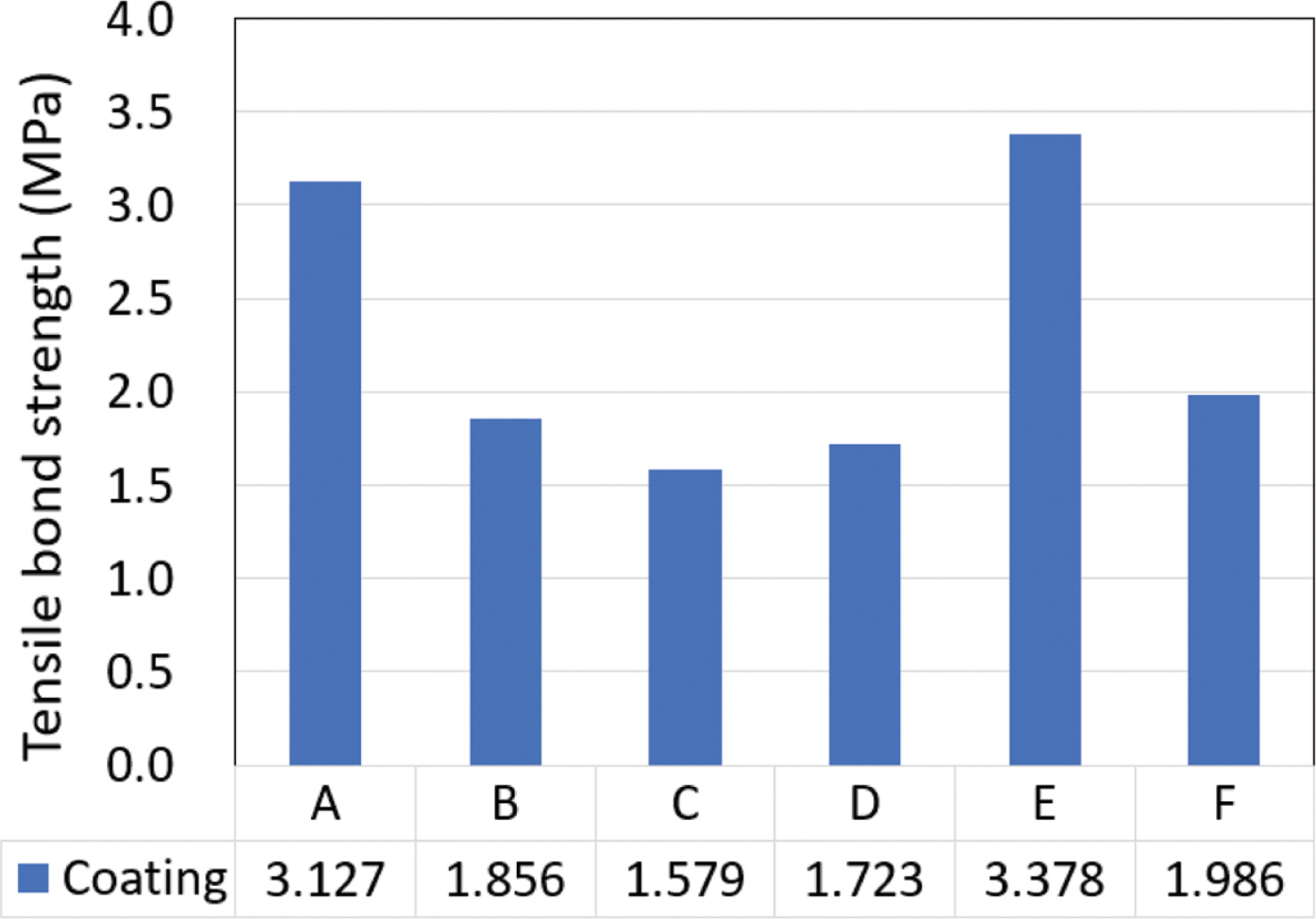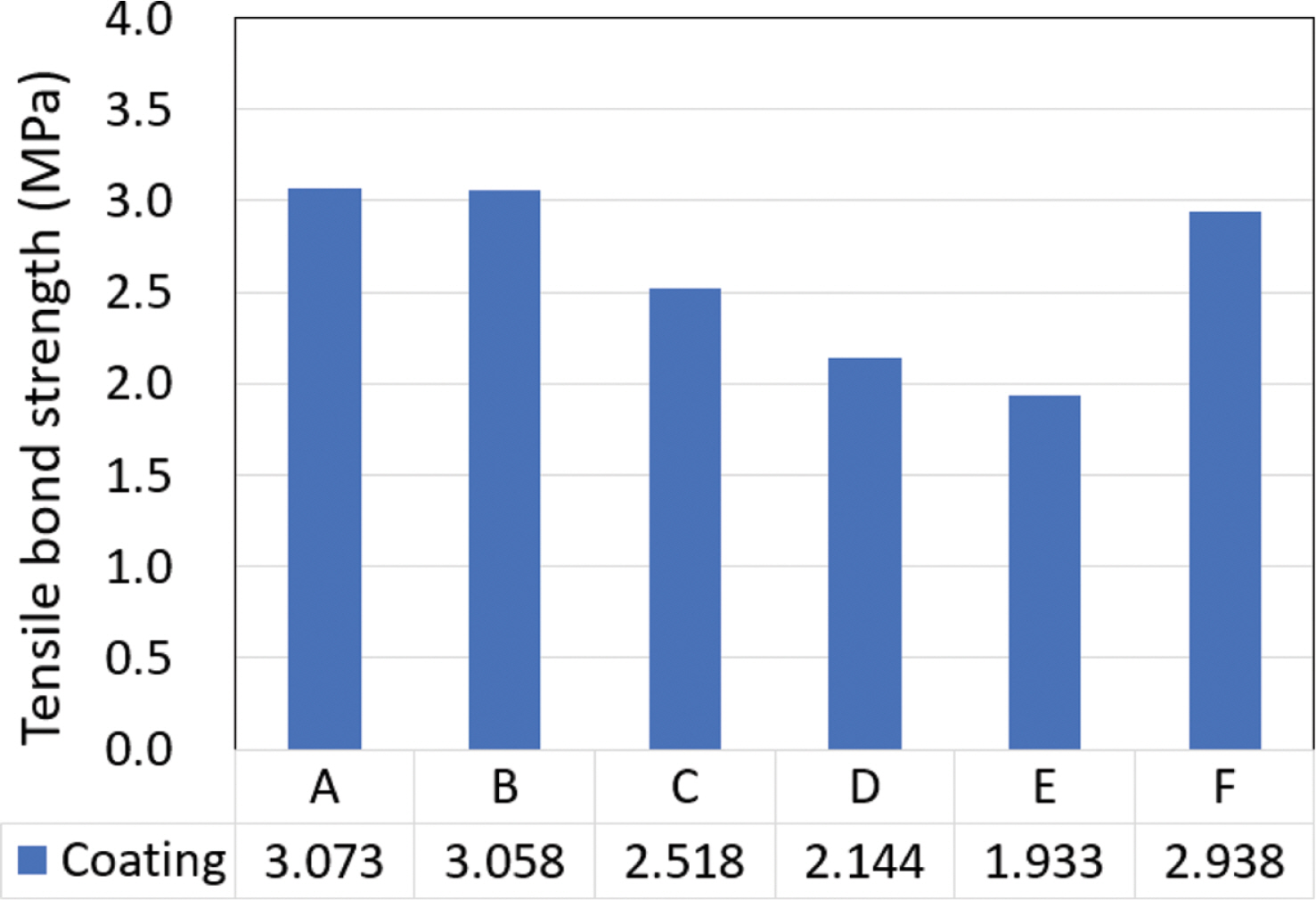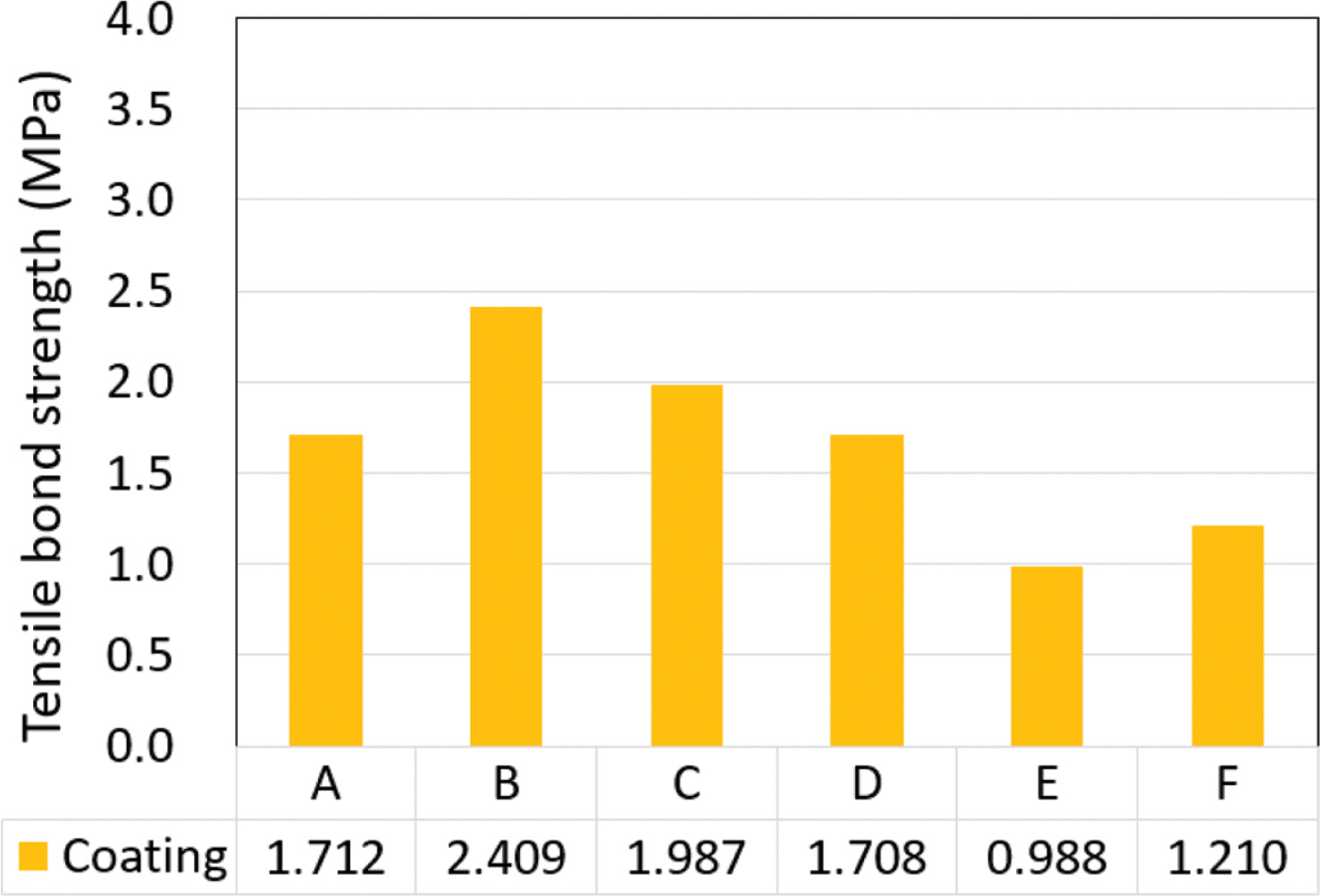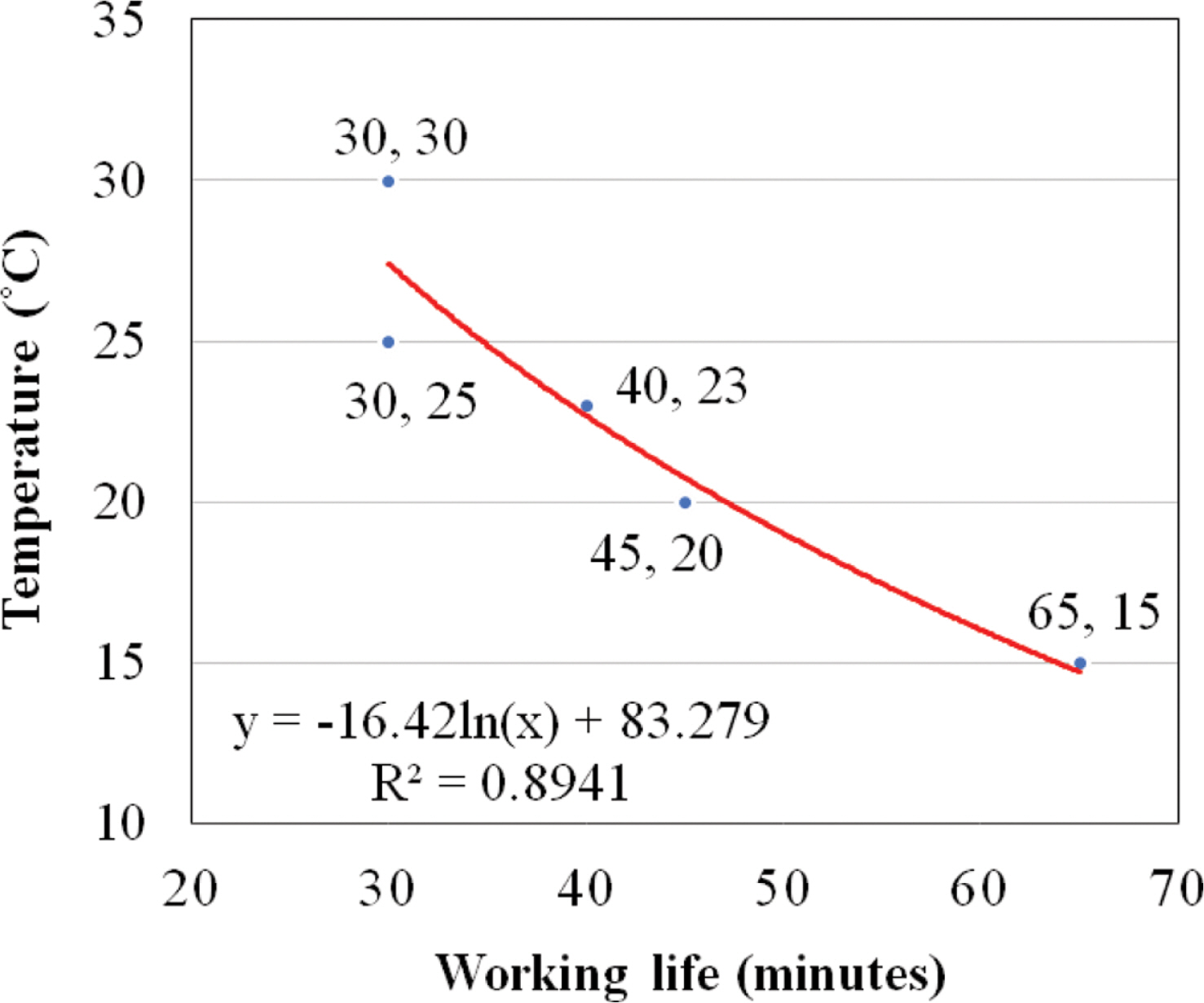1. Introduction
Underwater coating is known as a fast and cost-effective method to repair submerged structures, such as the underwater parts of vessels and floating structures. Many coating materials have been developed and used for the repair of marine and coastal structures, however the selection and use of coatings can be poorly performed, due to limited knowledge of material properties, and of their application and durability under sea water. Some companies provide detailed product information and user friendly guidelines, although most of them do not, and this can cause problems for engineers who are not familiar with the coating materials. Thus, marine engineers planning to use underwater coatings need to be careful in their selection of materials, to ensure optimum performance, and also to reduce total repair costs. As shown in Fig. 1(a) and (b), marine concrete structures are directly exposed to harsh environments, and their service lives can be reduced to less than their original design, and/or their planned life expectancy (Costa and Appleton, 2002; Kim et al., 2017).
Coating materials are directly applied to the surface of targeted structures and will prevent penetration of water and corrosive ions. Concrete surface treatments can be classified as coating sealers, pore blockers, or pore liners, based on their performance, and stylized depictions of the different treatment types are shown in Fig. 2 (Medeiros and Helene, 2009).
Many researchers have pointed out the importance of various aspects that help improve durability and performance of coatings. These aspects include creating an appropriate bond between the old substrate and any newly applied material, the type of coating, its thickness, substrate surface roughness, and allowing for environmental conditions (Almusallam et al., 2003; Brenna et al., 2013; Kim et al., 2016; Moradllo et al., 2012; Pan et al., 2017; Santos and Julio, 2011; Song et al., 2004). Kim et al. studied the effects of concrete patch repair on the structural performance of deteriorated reinforced concrete members (Kim et al., 2016). They focused on the bond between polymer-modified mortar and the concrete substrate, and confirmed that repair shape and thickness both had a greater impact on cracking resistance than the bond strength itself. Epoxy and polyurethane coatings were recommended, based on comparisons between different generic coatings, such as acrylic, polymeric, and chlorinated rubber, to ensure improved concrete durability (Almusallam et al., 2003). They also reported that even the same generic coating could perform differently, based on manufacturing variations.
The effect of coating thickness on concrete durability was investigated, and greater thickness contributed to the durability of structures (Brenna et al., 2013). The authors pointed out that surface coating can delay the initiation of rebar corrosion, as it prevents water penetration. As shown in Fig. 3, the effect of surface roughness on bond strength was investigated, using both slant shear and splitting tests, and a strong correlation between the bond and increased stiffness was observed (Santos and Julio, 2011).
The location of marine and coastal concrete structures has been reported as being one of the most significant factors that can accelerate rebar corrosion inside structures (Song et al., 2004). The long-term performance of five different generic coatings, applied to concrete located in the tidal zone, was investigated, and epoxy polyurethane and aliphatic acrylic coatings showed better performance than other cementitious coatings applied in the same harsh environment (Moradllo et al., 2012). The authors proposed the reapplication of coating prior to its deterioration, to extend its performance. It should be noted that most previous studies focused on conventional coatings for onshore structures, rather than underwater coatings for offshore structures. This might be due to the difficulty of underwater testing and measurement, and the absence of testing guidelines to follow.
In the research reported here, an experimental program was set up to investigate the effect of variables such as coating type, substrate surface roughness, and environmental conditions, on the performance of underwater coatings, and some suggestions have been made to improve repair work outcomes for marine and coastal concrete structures. Six commercially available coating materials were selected, and comprehensive experimental campaigns were conducted to understand the effects of the test variables on tensile bond strength. Each coating was directly applied to prepared concrete specimens in both dry and wet conditions.
2. Experimental Investigation
2.1 Underwater Coatings and Material Properties
Six different, commercially available, epoxy resin coatings, identified in this paper as A, B, C, D, E, and F, were selected for examination, based on underwater applicability and pretest results. Material property information received from manufacturers (bond strength, density, and pot life) has been summarized in Table 1. All the selected coatings had two components, a base (viscous liquid) and a solidifier (thixotropic liquid). Coating work was carried out with a brush rather than with spray equipment. Targeted coating thicknesses ranged between 0.2 mm and 1.0 mm, based on previous research (Brenna et al., 2013). Coatings A and E were originally developed for steel structures rather than for concrete, but, were included in this study for comparison purposes.
2.2 Concrete Mix Proportion and Surface Preparation
As shown in Fig. 4(a), the size of parent concrete specimens was 600 × 500 × 100 mm3, and 10 specimens were prepared. Table 2 shows the concrete mix proportions and measured strength values. Parent concrete compressive and splitting tensile strengths were measured, using ASTM C39 and ASTM C496, respectively. The water to cement ratio (w/c) adopted in this study was 0.37, and compressive and tensile strength values after 28 days were 41.3 MPa, and 3.0 MPa, respectively. The concrete surface to be coated was water-jetted after one day of concrete casting, as shown in Fig. 4(b). Concrete retarder was applied to the targeted surface, three hours after casting, to delay setting time. Concrete sample surface roughness was not systematically investigated in this study.
2.3 Testing Procedure and Data Analysis
Tensile bond strength for each coating was measured using an ‘Elcomenter’ automatic adhesion tester (510 Model S). The strength was automatically calculated with dividing the maximum tensile force (N) by the contacted area (1,962.5 mm2, radius = 50 mm). The detailed testing procedure adopted in this study was as follows (see Fig. 5).
(1) The two coating components (epoxy type base + solidifier) of a coating were prepared, then mixed for more than five minutes, with electrical shaking equipment.
(2) A 50 mm diameter aluminum dolly was attached to the concrete surface, using the selected coating material.
(3) The testing gauge was attached to the dolly.
(4) Tests and measurements were performed.
(5) Bond strength values were recorded and the failure pattern observed, for each coating.
It should be noted that generally there were four different failure patterns, namely adhesive failure, partial coating failure, coating failure, and concrete failure.
3. Results and Discussions
3.1 Effects of Coating Material on Bond Strength
Table 3 includes all measured bond strengths for dry, smooth surfaces. Bond strength measurement was conducted at three places for each specimen, and then averaged. Fig. 6 illustrates averaged bond strength values. Coatings A and E, which, as mentioned previously, were originally developed for steel, exhibited higher bond strengths than the others. The ratios of the measured bond strength to the bond strength claimed by the manufacturer for underwater conditions ranged from 12.4% to 26.9%. Coatings A and B showed stronger bonds in dry conditions. It should be noted that coating A showed robust performance in its bond compared to others, based on the results of standard deviations. Coating C had the lowest bond strength, but this might be due to different laboratory conditions or human error introduced during the test and/or measurement procedures. In this study, the bond strength measurement was conducted shortly after applying each coating, to prevent concrete failure that might be caused by the low tensile strength of the concrete. These issues and results indicate that further experimental studies are required, to investigate both longer term bond performance, and any effect of underwater coating materials on concrete durability.
3.2 Effect of Environmental Conditions on Bond Strength
Underwater coating was carried out in the laboratory, and measured bond strengths were compared with those measured in dry conditions (see Table 4). Fig. 7 shows averaged bond strength values for smooth surfaces underwater. Measured water temperature ranged from 13.5°C to 18.5°C at the time of coating. Coating A had the highest bond strength, while those of Coatings D and E were both significantly reduced (38.4% and 39.2%, respectively). The reason for such differences was not clear, given the limited range of this research, but might be related to a dissolution issue that could have occurred underwater.
3.3 Effect of Concrete Surface Roughness on Bond Strength
Table 5 includes measured bond strengths and strength ratios for a rough surface, and compares these to a smooth surface. Fig. 8 and Fig. 9 illustrate averaged bond strength values for rough surfaces, for dry and underwater conditions. Bond strength generally increased on rough surfaces, compared to smooth surfaces, except for coatings A and E, with the latter showing a significant bond strength loss (42.8%), as shown in Table 5. The reason for this decrease may be related to the viscosity of the coating, as this was lower for E than for the other coatings. Thus, it can be concluded that too low viscosity might not be a good characteristic in a coating required to cover a rough surface in dry conditions.
Underwater, no effect of surface roughness on bond strength was observed, with only 5.9% difference in average bond strength noted, between the smooth and rough surfaces. Thus, it can be said that the effect of surface roughness on bond strength might not be as significant underwater as it was in dry conditions.
3.4 Failure Patterns of Underwater Coatings
Representative coating failures observed in this study are shown in Fig. 10. Adhesive failures underwater occurred between the coating and the concrete substrate for all coatings, while no consistent pattern was observed in dry conditions.
Generally, concrete failure means a good bond between applied coating and existing concrete, thus, this pattern can be more common in actual condition. In this study, however, adhesive failures underwater were only observed and this might be related to the time of measurement. Therefore, further experimental study is necessary to investigate the long-term performance.
3.5 Discussions and Recommendations
Temperature is one of the most important factors to be considered for underwater repair, as temperature and available working time (pot life) have a strong correlation, as shown in Fig. 11, which was prepared using available working time for each underwater coating, as shown in Table 1. During underwater coating, in this study, water temperatures ranged 13.5°C to 18.5°C, thus, coating work could be easily completed without considering the time limit. However, in case of an outside temperature above 30oC and using a coating pumping system from a floating ship, available working time can be limited to as little as 10 min. This emphasizes the need for careful planning prior to starting underwater repairs, to ensure that sufficient working time is available, prior to pot life expiry.
In addition to temperature, appropriate coating material, coating equipment, and repeated pretesting are also important for the successful completion of underwater repair work on marine and coastal concrete structures. It should be noted that most previous studies were carried out under controlled conditions in the laboratory, thus, further experimental study in the field might be necessary.
It was not possible to identify the best type of underwater coating at this time, as real subsea conditions can vary significantly, depending on the location of the targeted structures. However, detailed repair plans, considering both repair area and water depth, and repeated pretesting of the coating materials, are essential for successful repair work on underwater concrete structures. In other words, appropriate repair procedures and suitable coating equipment must be prepared prior to repair work starting, to reduce both material loss underwater, and total repair cost. Lastly, this research work is part of a research project that is still underway, and research into development of novel underwater coating equipment, developed to improve coating performance, and also into the effects of some equipment on bond performance, will be investigated further and reported in the future.
4. Conclusions
The effects of different underwater coating materials, surface condition, and some environmental conditions, on the tensile bond strength between the coating and substrate concrete have been researched, and the following conclusions have been reached, based on the test results.
(1) Even with same generic type of underwater coating, bond performance can vary between manufacturers.
(2) Tensile bond strength generally decreased underwater, compared to that achieved in dry conditions.
(3) There was no obvious surface roughness effect on measured bond strengths underwater, while bond strength increased with a rough surface in dry conditions.
(4) Adhesive failure between the applied coating and the parent concrete was the most common coating failure type underwater.
(5) Temperature is the one of the most important factors to consider for a repairs plan, as curing time for underwater coatings greatly depends on the outside air and water temperatures.
In this study, tensile bond strengths were measured just 24 h after application, and further experimentation might help to clarify long term bond performance in the case of underwater coatings applied to actual submerged concrete structures. Based on our experimental results and comparison with information received from manufacturers, some suggestions have been made to improve the success of underwater coatings on marine and coastal concrete structures.








